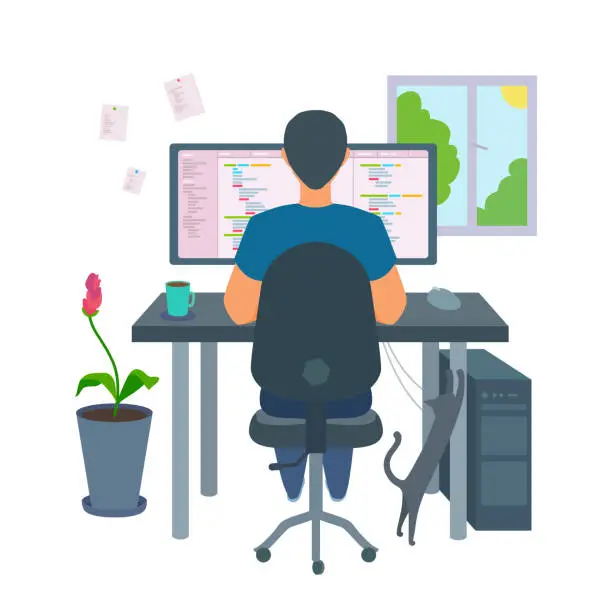
Mental health is a permanent feature in the workplace, and it is affecting employees’ health, effectiveness, motivation, and confidence. Anxiety is one of the most common mental health conditions in the United States, affecting 40 million adults. Often, symptoms of anxiety can worsen in stressful environments, such as workplaces and boardrooms.
As an employer, it is essential that you understand how to support anxious employees. In this article, we will be sharing the methods you can use to support employees struggling with anxiety. We will advise you on multiple strategies so that you can effectively support individuals in the way that they need.
What Is Anxiety?
It is not uncommon for individuals to feel anxious from time to time. However, when anxiety takes hold, people experience feelings of overwhelm, fear, and panic that can range from mild to severe. “Often, anxiety can stem from a deep-seated past trauma that we fail to acknowledge and confront”, says Olivia Marcellino, VP of Research at LuxuryRehabs.com.
These feelings can manifest themselves in various symptomatic ways, having a significant impact on a person’s ability to go about their daily life.
How to Spot Anxiety

Maybe you are reading this article because you suspect a member of your team is struggling with anxiety. Below are some of the most common symptoms of anxiety. These behaviors should help indicate whether an employee is struggling with their mental health or not. The earlier you can identify the problem, the more proactive you can be regarding finding a solution.
- Negative changes in behavior (more withdrawn, snappy, or irritable)
- A reduction in work performance and motivation
- An increase in absences
- Difficulty remembering things
- Changes in eating habits
- Distractedness and difficulty concentrating

If you have noticed any of the above symptoms surfacing in your employees, they could be struggling with anxiety. Below are some of the strategies you can adopt to help support them.
Undergo the Relevant Training
To effectively support employees who are struggling with mental health difficulties, it is important you know what you are talking about. Mental health is a difficult topic and can be hard to understand – especially because it affects every single person differently.
Therefore, in order to properly support your employees and help, rather than hinder them, it is important to undergo the relevant training to learn more. Training by mental health professionals will equip you with the knowledge you need to learn more about anxiety, combat the stigma associated with it, and properly support those in need.
Anxiety Linked to Home Office
Working from home has become the new normal around the world. And while it has numerous benefits, many employees are finding it difficult to strike a healthy work-life balance. And as an employer, it can be difficult to support employees effectively when they are no longer coming into the office.
If your employees are reporting anxiety related to the home office, whether it’s balancing childcare responsibilities, finding it hard to switch off at the end of the day, or struggling to concentrate, you need to be on-hand to offer support as it is needed.
The best way to help manage employee anxiety linked to the home office is to be in regular communication. Whether it’s a quick check-in each morning or a phone call during the day, prioritizing communication is one of the best ways to reduce anxiety in home-working employees.

Not all your employees will be willing to openly share how they are feeling. As such, some organizations are providing emoji feedback where employees can send a thumbs up if they’re feeling good, a wave if they’re just feeling average, and a sad face if they’re struggling. It sounds pretty basic but it’s an effective way for employees to gauge how their teams are feeling and who needs extra day-to-day support.
Anonymous surveys can also be helpful for employees who want support but don’t want to admit publicly that they are struggling. Through surveys, you can discover how people are feeling and their suggestions for how to help. You can then implement these changes, from flexible working arrangements, better sick pay, paid-for counselling sessions, and working incentives, across the whole team. This protects the privacy of those who are vulnerable while also ensuring they have access to the support they need.
Communication provides an excellent opportunity to hear from your employees about what kind of support they need and how you can help. It’s a simple suggestion but it can have a significant impact.
Anxiety Linked to Coming Back to the Office
After over a year of working from home, many employees are feeling anxious about returning to the office. They have enjoyed the flexibility and relaxed nature of working from the home office, they have relished not having to commute to the office every day, and they have found it more productive (for the most part!)
However, despite feeling excited about seeing many of their co-workers in the flesh again, the thought of returning to the office is causing significant anxiety. This is extremely common and something all employees can provide support with.

A great way to ease anxious employees back into the office is by starting with a staggered approach. Have them come in for half a day and see how things go. Things around the office may have changed. There might be new seating arrangements, new processes, and even new people. It’s a lot to adjust to. So, start slowly and build your way up.
Slow and steady wins the race and a slow reintroduction back into the office is just what your employees need after what has been an extremely tumultuous and anxiety-inducing year.
Offer Flexible Working Arrangements
The 9-5 working day doesn’t agree with everyone. Every single person working in your office has their own life outside of work, their own responsibilities, and their own stressors.
If you find that your rigid work structure is impeding your employee’s ability to get work done effectively, you might consider offering flexible working arrangements.
This means being as flexible as you can about when they start work, when they finish work, and where they decide to work from. You might consider offering flexible working hours or permitting anxious employees to work remotely for a couple of days out of the week.
You will be surprised just how much pressure you relieve from anxious employees by offering them more flexible working hours. Even small changes can make a world of difference for those who are overstressed, overworked and overwhelmed.
Introduce an Open-Door Policy
As the boss, it can be tempting to shut yourself away in your office all day, every day. And remote working has made this separation even easier. However, while this might allow you to get more work done and suffer fewer interruptions, it doesn’t exactly make you very approachable.
Introducing an open-door policy means keeping your door open to everyone at any time. What this means in a remote setting is that you are contactable by your team at all hours of the day. Whether it’s via telephone, email, or online messaging, an open-door policy lets remote workers know they can contact you at any time if they want to talk. It’s a simple way to show your team that you care. Open-door policies create connections, help develop relationships and make you seem more approachable.
Open-door policies are very beneficial for employees struggling with symptoms of anxiety as it helps reassure them, they can talk to you if needed. Originally started in office environments where managers would leave their office doors open, the open-door policy is now being carried through to remote working with great success.
If you want to connect with your employees and be known as someone who takes care of their team, introducing an open-door policy is the way to go.
Communicate Openly and Honestly
We all need someone to talk to and often when people are struggling with anxiety, they isolate themselves from others because they feel ashamed or scared to admit how they are feeling.
Communication is key to having a healthy, happy workforce. If you want to support anxious employees, it is essential that lines of communication are kept open.
Once you are aware that your employee is struggling with anxiety, why not take some time out of your day and arrange to have a chat with them in a private space to understand more about their struggles and how you can help?
Providing a safe space for people to talk in which they feel heard is especially reassuring for those struggling with anxiety. What’s more, it provides you with invaluable insight into their struggles and helps you better understand how you can effectively support them with their needs.
Create a Calming Work Environment
Offices can be noisy and messy places. With many people working at desks for 8 hours a day, workplaces can feel extremely hectic and busy.
What’s more, they can easily become cluttered and disorganized. These things can have a negative impact on employee mental health, often causing symptoms of anxiety to worsen.

Focus on creating an environment that is calming and welcoming. Let in plenty of natural light, keep office spaces clean and tidy, introduce plants into the office, provide quiet working spaces, and add relaxation areas.
Make an effort to better the working environment for your whole team and you will create a space that your employees actually want to be in.
Provide Therapy Sessions
No matter your efforts, it is not uncommon for employees to be unwilling to talk about their mental health in the office. And this is completely understandable. But it’s important not to take it personally – especially when you have gone to so much effort to offer them support.
Sometimes, anxious employees just need someone to speak to who they don’t know and who doesn’t know them. Anonymity often serves anxious individuals incredibly well. As such, it can be helpful to offer therapy sessions for those struggling with anxiety.
Therapy is a wonderful complimentary service that employers can provide to their employees in order to support their mental health. And it’s one of the best ways to ensure everyone is taken care of and receiving the professional support they require.
Final Thoughts
Providing the appropriate support for anxious employees can be difficult, especially when everyone responds to things differently. However, we hope the above tips have provided some good ideas. And if you’re ever unsure, just ask your employees how you can support them.
The most important thing is to listen, communicate, and meet peoples’ needs wherever you can.
This article was written by mental health specialist Chris Harley.





Leave a Reply